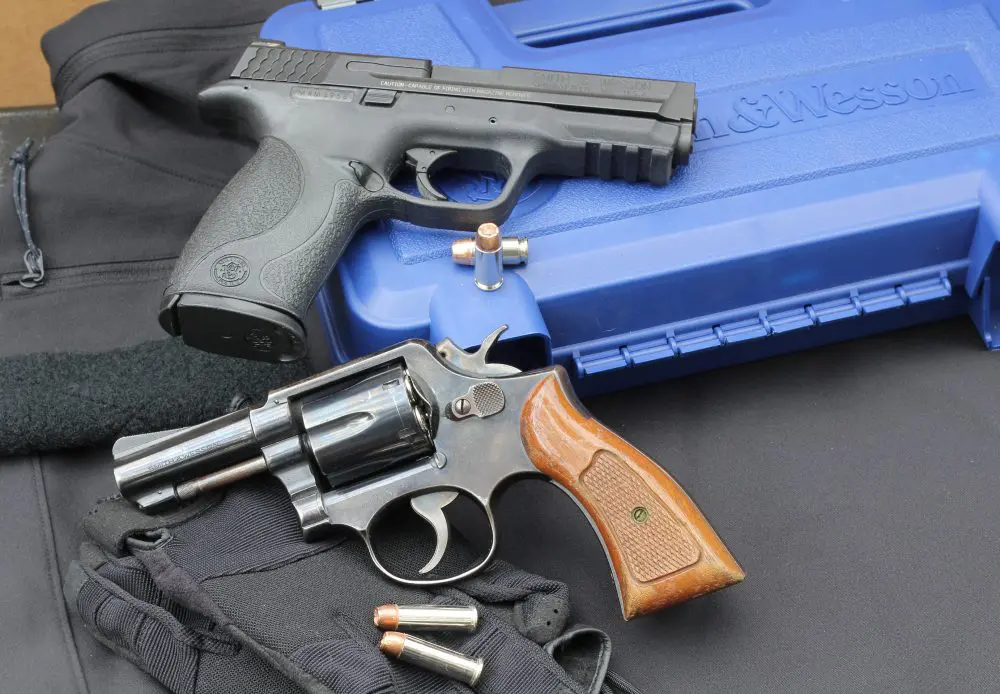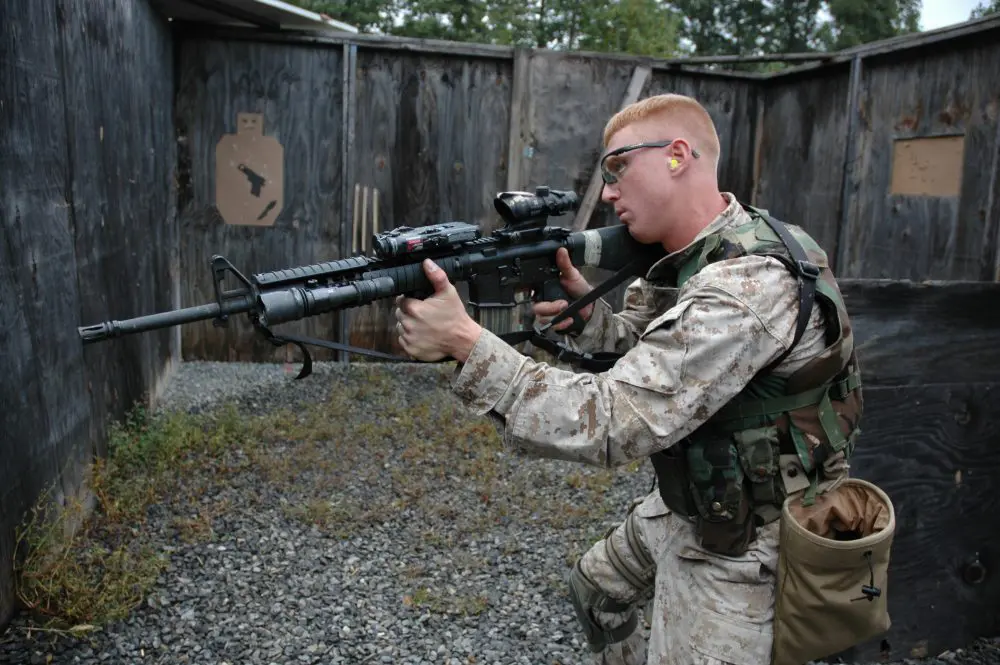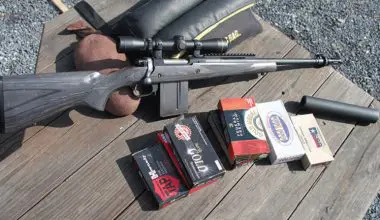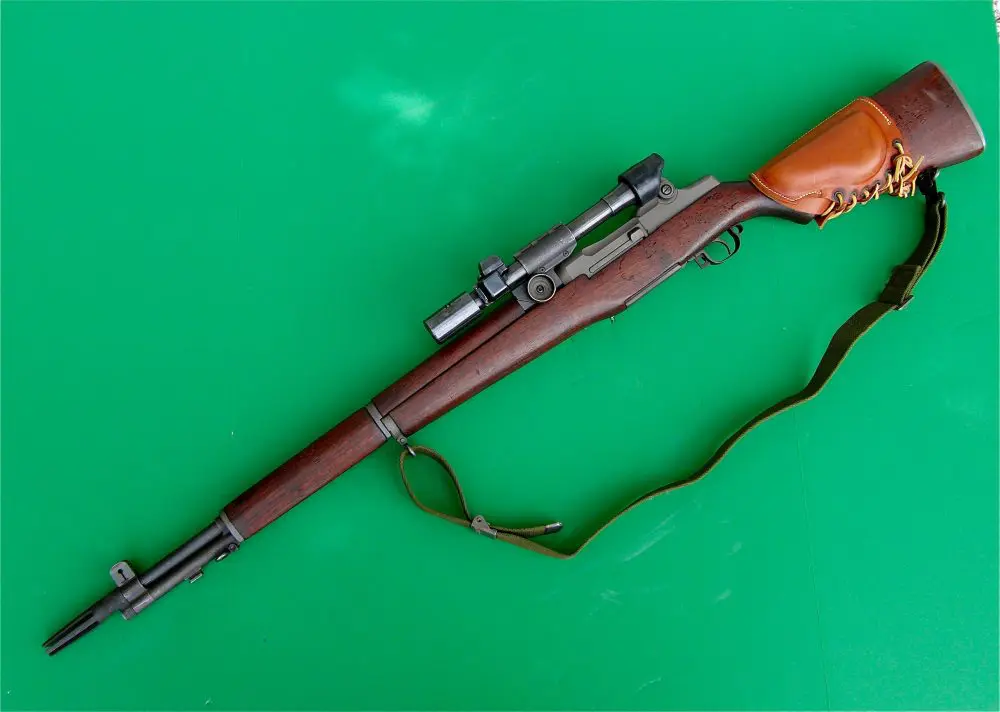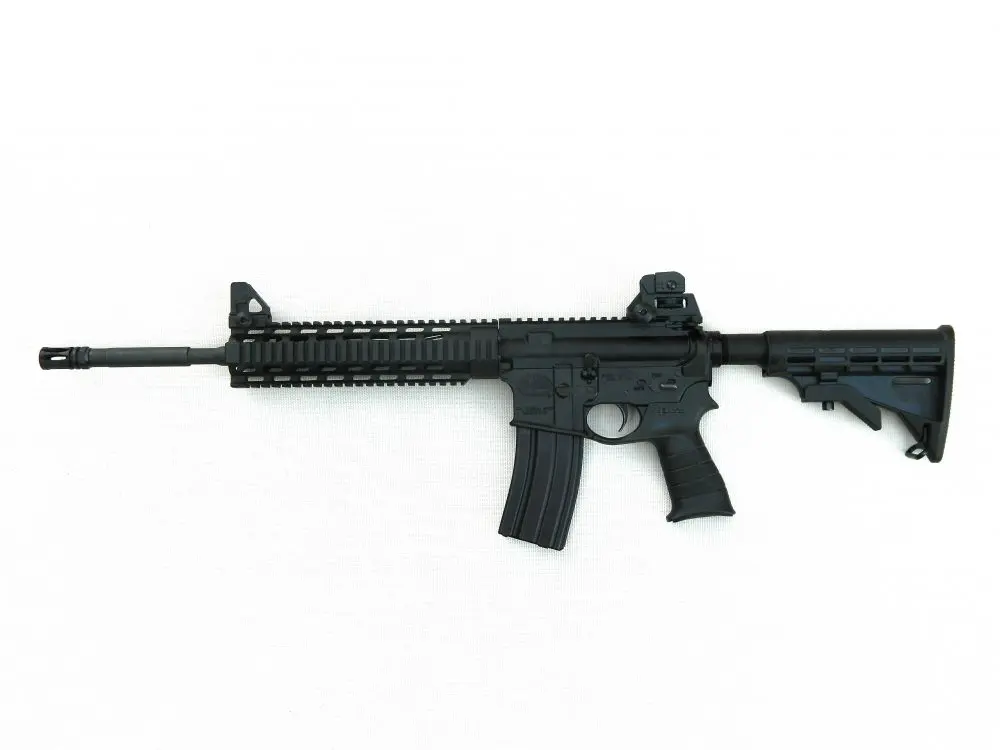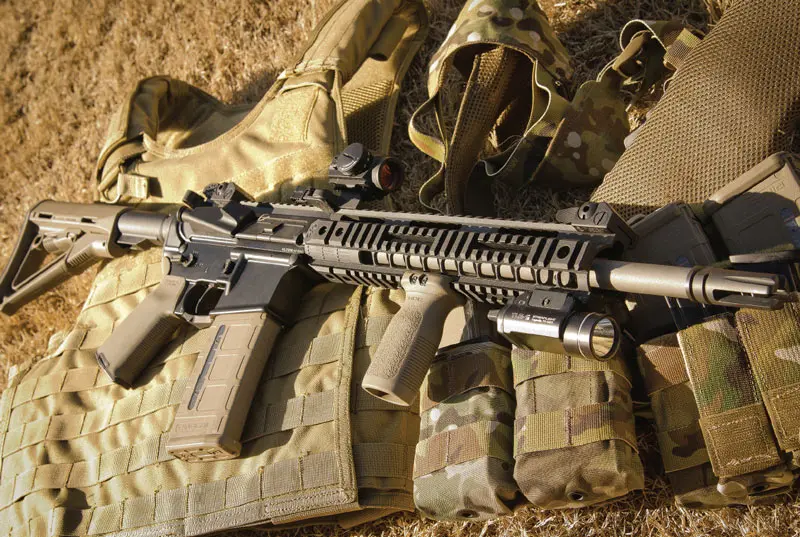
I’VE always had a fascination with the AR platform. It was the M16/M4 that I saw in action movies, the AR-15 that was lighting up ranges around Kentucky, and the M16 my Dad carried in his patrol car.
Over the years I’ve owned a few ARs myself, but never found the perfect rifle for me. That’s why I decided to build the “ultimate” AR. Dealing with the folks from Noveske Rifleworks was a simple process. I sent them several emails, and Joel, Sheri and the rest of the staff were always quick to respond and very polite. I was overseas but came home a couple months later, said my hellos to my family, had a nice cheeseburger, and immediately went to work on the rifle.
Table of Contents
THE NOVESKE UPPER
A quick glance at the rifle proves this is no ordinary AR-15. It features a uniquely contoured VLTOR MUR (Monolithic Upper Receiver) made specifically for Noveske Rifleworks. The MUR features a reinforced forged 7075 aluminum design that strengthens the receiver, while removing a lot of the slop found in many receivers. This improves the fit and stability of the receiver while increasing the inherent accuracy of the platform.
The Superior Weapons Systems (SWS) freefloating 11-inch quad rail is also specially made for Noveske and features Noveske’s Iron Cross logo. The rail is a comfortable, efficient design that feels slimmer than many rails I’ve used. This forearm includes integrated quick-detach sling-swivel mounts. These mounts are one of the best features of the rail, with swivel points at the three and nine o’clock positions near the muzzle and at the nine o’clock position near the receiver.
Like most quality quad rails, the SWS is “T” marked for quick indexing of accessories. The upper receiver features a milspec auto bolt carrier with shot peened and magnetic particle tested bolt, and properly staked gas key. This masterpiece upper receiver is rounded out with a Bravo Company Gunfighter charging handle and a pair of Novekse-marked Troy Industries flip-up iron sights.
BARREL
The heart of any rifle is the barrel. According to Noveske’s website, the barrel design is intended to provide a combination of precision and reliability. Their stainless barrels are made from 416r steel and hardened to 30 HRC before machining. The barrels feature a proprietary step-down contoured profile and bead-blasted finish. They have a 1:7 twist, 7PT button rifling profile. A proprietary Noveske development, the design of the rifling grooves helps to minimize wear and reduce the rate of decay in the barrel. This extends the barrel life exponentially over many other commercially available barrels, including the milspec chrome-lined variety.
The proprietary chamber is designed to improve the transition from the chamber to the throat of the barrel, giving the bullet a more uniform contact with the rifling. This modification to the NATO chamber allows the rifle to cycle just about any kind of .223 Remington or 5.56x45mm ammunition reliably and maintain an insanely high level of accuracy.
While Noveske recommends the stainless barrel for precision work and their chrome-lined barrel for high-volume use, I have yet to run into any problems with the high volume of fire I’ve run through my upper.
John Noveske had a very pragmatic view on barrel lengths. Paraphrased, his advice was to figure out what barrel length you think you need, and go one shorter. Since I did not want to do the paperwork for a short-barreled rifle, I chose the 14.5-inch, with a permanently pinned AAC Blackout flash suppressor, which is one of the best flash suppressors on the market.
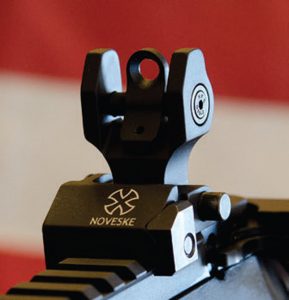
LEFTY-FRIENDLY LOWER
The lower receiver started life as a Doublestar stripped lower purchased in 2009. The receiver was completed using a Palmetto State Armory lower parts kit with a standard trigger.
I also used a VLTOR milspec stock extension, Magpul CTR stock, and Noveske QD swivel end plate. The CTR stock is one of the best carbine stocks on the market. I’ve tested a lot of stocks, from the standard carbine and fixed stocks to the Magpul UBR. The friction lock on the CTR provides a good, positive lock-up and completely eliminates wobble.
A milspec H buffer and JP Enterprises carbine spring make it a soft shooter. The Magpul MOE+ grip has a rubber overmold for a comfortable grip and more positive control of the weapon.
The Battle Arms Development Ambidextrous Safety Selector is by far the best I’ve ever seen. The modular design lets the user select from a wide variety of selector-switch options, including a long switch, short switch, and hybrid switch that features a thinner profile on the lower half of the switch. Being a lefty, I run the full-size lever on the right and the short lever on the left. This allows ambidextrous operation, while keeping the selector out of the way of the trigger finger.
The Norgon Ambi-Catch functions exactly as it sounds. It permits the user to release the magazine catch from either the left or right side of the receiver. The Ambi-Catch uses a rotating cam, fulcrum and push button to pull the magazine catch out of battery, thereby releasing the magazine and allowing it to fall free. The right-side button is essentially a standard magazine release.
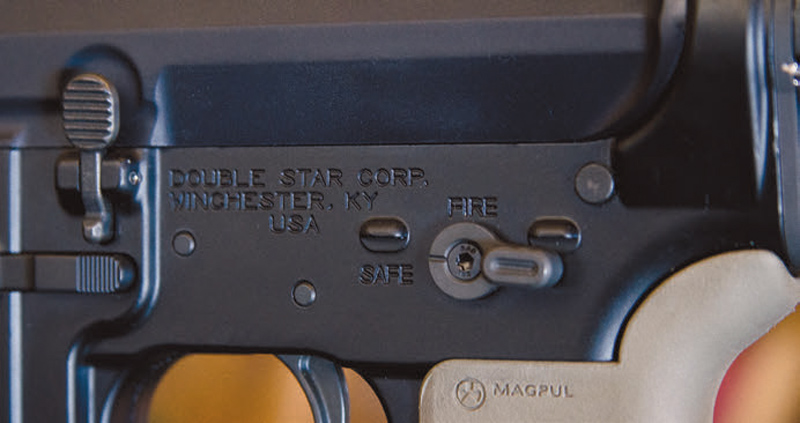
FIRST IMPRESSIONS
Initial testing demonstrated that the rifle was capable of producing groups from 0.9-1.25 inches at 100 yards using iron sights and off-hand from the seated position. I logged the initial accuracy testing, and the average of 25-round groups fired at 100 yards was one inch. Some groups were smaller and some bigger, but in all cases where groups were worse than expected, I can cite operator error.
After shooting at 100 yards, I transitioned to 200-yard steel targets and, once again using the iron sights scored 30 of 30 hits on the 16-inch steel plates. Zero and initial accuracy testing were performed using Hornady 75-grain Steel Match OTBT.
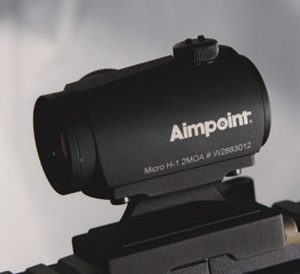
TORTURE TESTING
After six months and about 2,500 rounds, I decided to do a little test. I went to every ammo store I could find, bought as many varieties of steelcased “dirty” ammunition I could find in as much quantity as I could afford and proceeded to shoot all of it. I accumulated 1,000 rounds of TulAmmo 55-grain, 500 rounds of Wolf “Military” 55-grain, 250 rounds of Wolf black box 55-grain, and 250 rounds of Brown Bear 55-grain. I also scraped together an additional 50 rounds of Hornady 75-grain steel match, a few hundred rounds of mixed manufacture 55-grain XM193 and 62-grain M855 mil-surplus ammo.
I ran the rifle through a series of drills, including the VTAC 1-5 and halfand- half drills, EAG failure-to-stop drills, Magpul BSA, Urban Prone, SBU Prone, barricade and multi-level port drills, and some generic multi-threat drills. In some of these drills, the proximity of the ejection port to the ground and the D.I. gas system mean a lot of dirt being blown back into the receiver during the drills, not to mention the discomfort of hot gasses, dirt and empty cases bouncing off the ground and into my face. The test was conducted in Kentucky in mid-June in 100-degree heat with 80% humidity.
During three days, more than 2,000 rounds, no cleaning, no additional lubrication, and my best efforts—I even tried firing the rifle inverted—the rifle never failed. It functioned flawlessly. Even after the three other rifles we were running with “better” ammo failed, the Noveske kept going undeterred.
Following the test, the rifle was thoroughly cleaned. The receiver and components were filthy, as expected. A significant amount of carbon buildup had developed around the base of the bolt, the bolt carrier was covered in grime, and the bolt cam pin required some effort to separate from the BCG.
But after cleaning and close inspection, no obvious increase in wear could be found. The bolt and extractor still looked as good as new, and the carrier showed no significant signs of wear. After almost two years of normal use and over 6,000 rounds with regular cleaning and maintenance, the rifle still looks good and runs like a Swiss clock, with only one noted issue.
During a slow day at the range with Winchester 55-grain FMJ, the gas rings somehow bound and cross-threaded. The rifle fired fine, so the problem went unnoticed until cleaning, when I found the gas rings completely shredded. I contacted Noveske, and within three days had four sets of replacements.
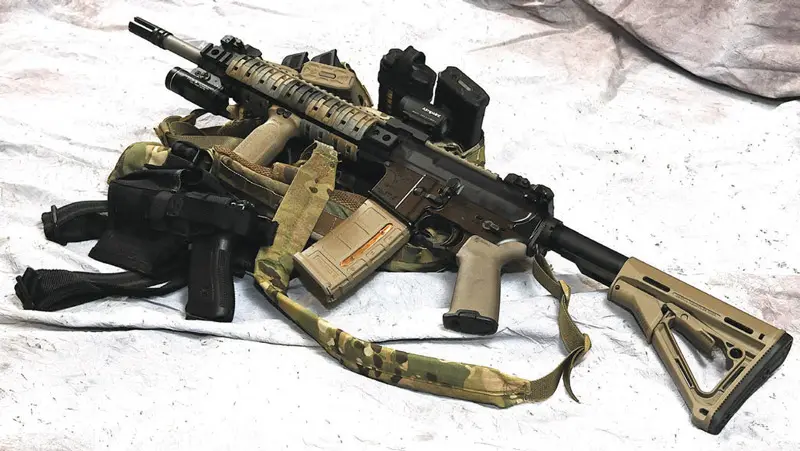
AIMPOINT H-1 MICRO
One of the most valuable accessories is a good optic. I went with the Aimpoint H-1 Micro in a LaRue Tactical LT751 co-witness mount. The H-1 is the nonnight- vision compatible version of its twin, the T-1 Micro. It comes standard with ½ MOA adjustments and 12 brightness settings. The Aimpoint features a 50,000-hour battery life (approximately five years), is remarkably lightweight and very durable at only three ounces without mount.
The Micro is unique because, due to its light weight and compact size, it features a slightly smaller tube and objective lens. This smaller lens caused some initial difficulty for me, as I was used to the Aimpoint M68 CCO (CompM2) or EOTech 552 HWS. But once used to it, I found the Micro just as fast and easy to see through as any other optic. The 2 MOA dot provides a precise aiming point at range, and covers less of the lens and target than the 4 MOA option.
The LaRue Tactical mount was chosen for its sturdy build and the LaRue QD Speed Lever. LaRue are well known for their QD mounts, and this one is no exception to their high standards of quality and reliability. I was a little hesitant at first because of its thin profile, but after almost two years of use, I can attest to the strength and durability of the mount. I also tested the return to zero of the mount during the course of fire and, while there may have been a slight rightward shift of zero, it was negligible and could have been shooter error.
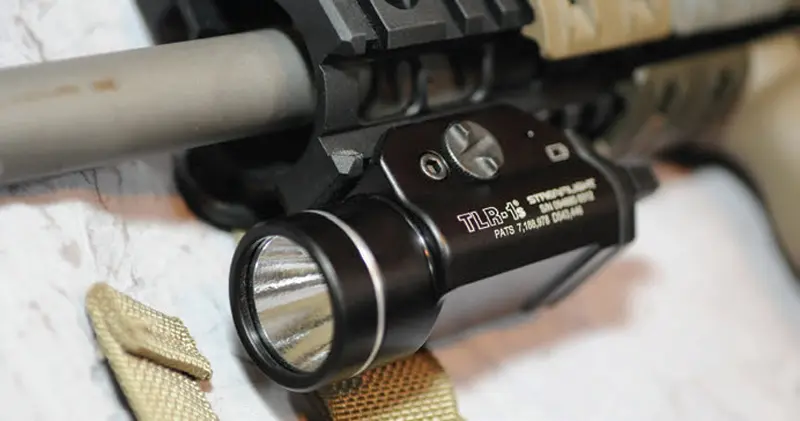
GET A GRIP
I tried several foregrip set-ups. The Magpul AFG2 was fine for speed shooting, but when used with a sling, supported position, or flashlight, it simply wasn’t comfortable for me. I finally settled on the Magpul MOE vertical grip. Its compact size and light weight allow me to access my flashlight using the thumb or forefinger of my support hand while keeping a good grip on the rifle.
To protect my hands from the rails, I run a combination of Ergo Grips ladder covers and Magpul XTM panels, which offer significantly more flexibility in what is and is not covered. The variety of color options let me develop a camouflage pattern on the quad rail.
LIGHT IT UP
Since this project was intended to be a multi-purpose rifle and not just a range queen, the next consideration was a high-quality illumination tool. I am currently evaluating the Streamlight TLR-1s.
This 300-lumen LED light runs on two CR123A batteries for up to two and a half hours of continuous use. For CQB or home defense, I feel that 300 lumens are more than sufficient. The beam is tightly focused and has a decent “splash area” to illuminate the surrounding environment.
The momentary/constant-on toggle switches can be operated using the index finger or thumb of the support hand and allow ambidextrous use. Streamlight also manufactures a series of pressure- switch options that are compatible with the TLR series of lights.
The TLR-1s also has a strobe function. A rapid double press of the switch activates a very intense strobing feature that can be extremely disorienting. If you don’t like the strobe feature, it can be deactivated, or you can save yourself $20 and get the standard TLR-1.
SUMMARY
The Noveske AR has become a constant in my shooting and training sessions. While I have changed configurations a time or two, it’s mostly still the same. I’ve loaned the rifle out to other shooters, and they all said the same thing: “It’s an amazing rifle.”
If you’re looking for a great AR, try Noveske—you won’t be disappointed.
